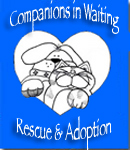For
dogs, there is no such thing as a hug. Putting your hands on its shoulders is
rude at best and a threat at worst. Its the same as if a person came up to you
and put you in a none-too-friendly headlock.
More
than 4 million people are bitten by dogs each year in the U.S., many of then children and the numbers are
on the rise. Often, bites could be avoided if more people understood dog talk. Here are some words and phrases and what they mean:
A dog plays with you and then walks away and lies down under a table.
Meaning: Leave me alone.
Dogs
can get tired of endless games. When they do, they generally move away. Going under a table or into a den-like area underlines the message. Pursuing a dog that has retreated can force the dog to say it louder and clearer next time.
A dog comes toward you, mouth closed, tail up, stiff, wagging fast.
Meaning: Im not sure about you.
A wagging
tail is something like a human smile often friendly but not always. Tail position
is a better indicator. A straightup and stiff tail says, Im alert, confident
and bold. A tail tucked under equals a dog thats fearful, anxious and stressed. A tail held at spine level is neutral: The dog is at ease and relaxed. There are breed variations, of course, but even a curly tailed pug will tuck his tail when worried.
A dog comes up to you, seems to be friendly, but then flashes its teeth.
Meaning: Howdy!
A grin
by any other name is still a grin. A dog with ears back, head and tail low, wiggling
and grinning is usually a friendly, polite dog who is just saying hello. If this
were a threat, the head and tail would likely be up, the fur along the neck spine would be up, and the dog would be growling
or barking.
A dog is standing still, tail raised, mouth closed, staring at you but not barking.
Meaning: Beware.
In
general, when a dog is very, very still, it is focused on something like a squirrel or a leaf blowing by. When that something is you, however, total stillness is a cause to pause.
Likewise, dogs who stop chewing a toy or eating when you approach are warning you.
If your dog does this, get help from a professional trainer. If it is
someone elses dog, back off and tell the owner.
A dog puts its front end on the ground with its rear in the air and barks at you.
Meaning: Come on, lets play!
Called
a Play bow, this is an invitation by your dog to let the games begin.
By
Sarah Wilson and Brian Kil commons
www.parade.com

